Related Research Articles

Maritime archaeology is a discipline within archaeology as a whole that specifically studies human interaction with the sea, lakes and rivers through the study of associated physical remains, be they vessels, shore-side facilities, port-related structures, cargoes, human remains and submerged landscapes. A specialty within maritime archaeology is nautical archaeology, which studies ship construction and use.

SS Great Britain is a museum ship and former passenger steamship that was advanced for her time. She was the largest passenger ship in the world from 1845 to 1854. She was designed by Isambard Kingdom Brunel (1806–1859), for the Great Western Steamship Company's transatlantic service between Bristol and New York City. While other ships had been built of iron or equipped with a screw propeller, Great Britain was the first to combine these features in a large ocean-going ship. She was the first iron steamer to cross the Atlantic Ocean, which she did in 1845, in 14 days.

A steamship, often referred to as a steamer, is a type of steam-powered vessel, typically ocean-faring and seaworthy, that is propelled by one or more steam engines that typically move (turn) propellers or paddlewheels. The first steamships came into practical usage during the early 1800s; however, there were exceptions that came before. Steamships usually use the prefix designations of "PS" for paddle steamer or "SS" for screw steamer. As paddle steamers became less common, "SS" is assumed by many to stand for "steamship". Ships powered by internal combustion engines use a prefix such as "MV" for motor vessel, so it is not correct to use "SS" for most modern vessels.
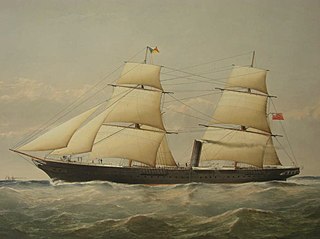
SS Carnatic was a British steamship built in 1862-63 by Samuda Brothers at Cubitt Town on the Isle of Dogs, London, for the Peninsular and Oriental Steam Navigation Company (P&O). She operated on the Suez to Bombay run in the last years before the Suez Canal was opened. This route gave a fast, steamship-operated route from Britain to India, connecting with similar steamships running through the Mediterranean to Alexandria, with an overland crossing to Suez. The alternative was to sail round the Cape of Good Hope, a distance at which steam ships were not, in the early 1860s, sufficiently economical to be commercially competitive with sail.

A steamboat is a boat that is propelled primarily by steam power, typically driving propellers or paddlewheels. Steamboats sometimes use the prefix designation SS, S.S. or S/S or PS ; however, these designations are most often used for steamships.
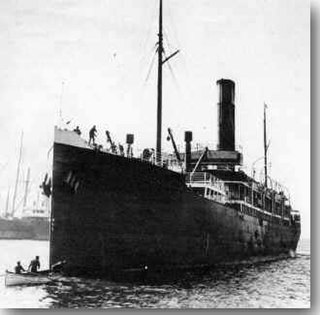
SS Yongala was a passenger and cargo ship that sank off Cape Bowling Green, Queensland, Australia on 23 March 1911. En route from Melbourne to Cairns she steamed into a cyclone and sank south of Townsville.

The SS William G. Mather is a retired Great Lakes bulk freighter now restored as a museum ship in Cleveland, Ohio, one of five in the Great Lakes region. She transported cargo such as ore, coal, stone, and grain to ports throughout the Great Lakes, and was nicknamed "The Ship That Built Cleveland" because Cleveland's steel mills were a frequent destination.
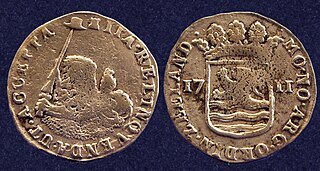
Zuytdorp, also Zuiddorp was an 18th-century trading ship of the Dutch East India Company.
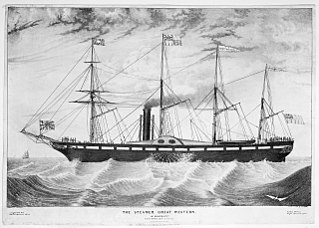
SS Great Western of 1838, was a wooden-hulled paddle-wheel steamship with sails the first steamship purpose-built for crossing the Atlantic, and the initial unit of the Great Western Steamship Company. She was the largest passenger ship in the world from 1837 to 1839, which was then passed by the SS British Queen. Designed by British civil engineer Isambard Kingdom Brunel, Great Western proved satisfactory in service and was the model for all successful wooden Atlantic paddle-steamers. She was capable of making record Blue Riband voyages as late as 1843. Great Western worked to New York for 8 years until her owners went out of business. She was sold to the Royal Mail Steam Packet Company and was scrapped in 1856 after serving as a troop ship during the Crimean War.
The Western Australian Museum is a statutory authority within the Culture and the Arts Portfolio, established under the Museum Act 1969.
Over 1400 ships have been wrecked on the coast of Western Australia. This relatively large number of shipwrecks is due to a number of factors, including:
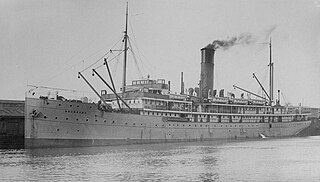
SS Koombana was a late Edwardian-era passenger, cargo and mail carrying steamship. From March 1909 to March 1912, she operated coastal liner services between Fremantle, Western Australia and various ports in the northwest of that state. She is best known for disappearing at an unknown location north of Port Hedland, Western Australia, during a tropical cyclone on 20 March 1912, killing 74 passengers and 76 crew; in total, 150 people died.
The technique of composite ship construction emerged in the mid-19th century as the final stage in the evolution of fast commercial sailing ships.
George Forrester and Company was a British marine engine and locomotive manufacturer at Vauxhall Foundry in Liverpool, established by Scottish engineer George Forrester. The company opened in 1827 as iron founders and commenced building steam locomotives in 1834.
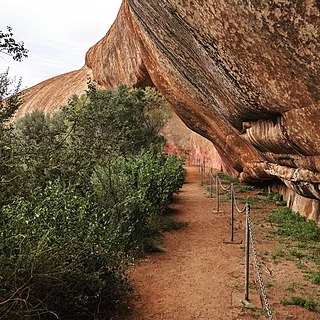
Walga Rock, also known as Walgahna Rock and Walganna Rock, is a granite monolith situated about 48 kilometres (30 mi) west of Cue, Western Australia, within the Austin Downs pastoral lease. It is one of the largest granite monoliths in Australia.

A marine steam engine is a steam engine that is used to power a ship or boat. This article deals mainly with marine steam engines of the reciprocating type, which were in use from the inception of the steamboat in the early 19th century to their last years of large-scale manufacture during World War II. Reciprocating steam engines were progressively replaced in marine applications during the 20th century by steam turbines and marine diesel engines.
MV Perth is a wooden boat that has operated on the Swan River in Perth, Western Australia. Built in Fremantle in 1914, it is one of the oldest wooden boats still afloat in Western Australia.

The Chaplin's patent distilling apparatus with Steam pump for circulating water attached was an early design of an evaporator, a device for producing fresh water on board ship by distillation of seawater. An example of this apparatus has been recovered from the wreck of SS Xantho (1872), an auxiliary steamship used in Australia to transport passengers and trade goods before ultimately sinking in Port Gregory, Western Australia in 1872. It is purported that the Alexander Chaplin distiller from the Xantho wreck is the only known surviving example of a Chaplin distilling apparatus on board a vessel of this period.
The Society for Underwater Historical Research (SUHR) was an amateur maritime archaeology organisation operating in South Australia (SA). It was formed in 1974 by recreational scuba divers and other persons to pursue an interest in maritime archaeology and maritime history. The SUHR was renamed as the South Australian Archaeology Society in March 2012 as part of a plan to expand its activities beyond maritime archaeology to include other archaeological disciplines.
William Patterson Shipbuilders was a major shipbuilder in Bristol, England during the 19th century and an innovator in ship construction, producing both the SS Great Western and SS Great Britain, fine lined yachts and a small number of warships.
References
- ↑ "The Children | Western Australian Museum".
- ↑ Lyon, D.J., 1975, The Denny list. National Maritime Museum, London
- ↑ Xantho, Certificates of Registry, Leith and Anstruther, PRO. London
- ↑ Osbon, G. A., 1965, The Crimean War gunboats. Part. 1. The Mariner's Mirror, The Journal of the Society of Nautical Research. 51, 103–116
- ↑ Xantho, Certificates of Registry, Glasgow, 61/1871 PRO. London
- ↑ McCarthy, M., 1986, The excavation and raising of the SS Xantho engine and Australia's first practical and theoretical seminar on iron and steamship archaeology. International Journal of Nautical Archaeology,15(2), News, 73–6.
- ↑ McCarthy, M, 2001, Iron and Steamship Archaeology: success and failure on the SS Xantho, Kluwer-Plenum
- ↑ MacLeod, I.D., 2010 Where to now: conservation of iron shipwrecks. Experiences from the SS Xantho project and their application to the H.L. Hunley and USS Monitor projects. In M.McCarthy (ed) Iron, steel and steamship archaeology : 119-130. AIMA, Fremantle, 2010.
- ↑ Garcia, R. 2010, Dismantling and reconstructing the SS Xantho engine. In M.McCarthy (ed) Iron, steel and steamship archaeology :105-109. AIMA, Fremantle, 2010.
- ↑ McCarthy, M., 2009. Iron, Steel and Steamship Archaeology: SS Xantho after twenty years and other developments. In M. McCarthy, K. Hosty, C. Philippou (Eds.), C., 2009 Iron, Steel and Steamship Archaeology. Papers from the 2nd Australian Seminar held in Perth, Melbourne and Sydney 2006. Australian National Centre of Excellence for Maritime Archaeology, Special Publication Number 13. The Australasian Institute for Maritime Archaeology Special Publication Number 15. Australian National Centre of Excellence for Maritime Archaeology, Fremantle : 5-11
- ↑ "Restoring the Xantho Engine 1983-1995". Western Australian Museum . Archived from the original on 10 August 2011. Retrieved 18 September 2013.
- ↑ McCarthy, M, 2001, op.cit.
- ↑ "The SS Xantho contents". Western Australian Museum . Retrieved 18 September 2013.
- ↑ Reynolds, Robert (1987). "The Indenoona Contact Site: A Preliminary Report of an Engraving Site in the Pilbara Region of Western Australia". Australian Archaeology. 25 (1): 80–87. doi:10.1080/03122417.1987.12093126.
- ↑ Paterson, Alistair; Wilson, Andrew (2009). "Indigenous Perceptions of Contact at Inthanoona, Northwest Western Australia". Archaeology in Oceania. 44 (S1): 99–111. doi:10.1002/j.1834-4453.2009.tb00071.x.